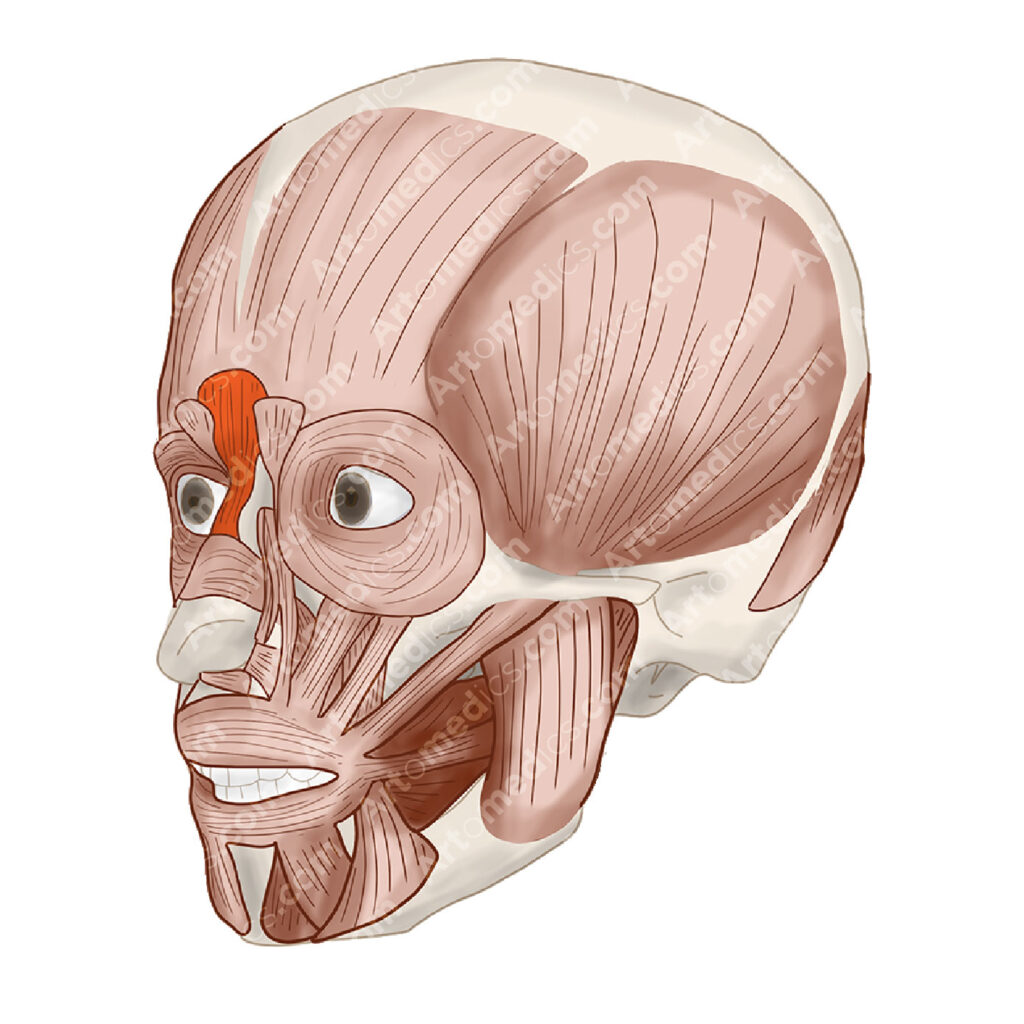Procerus Muscle
Furrowing your eyebrows when confused, mad or trying to focus your vision, the Procerus muscle is there to assist.
Located right between your eyebrows, above your nose bridge, shaped as a pyramid, it comes from the fascia of the superior nasal region, pretty close to the nasal bones and the nasal cartilage. It’s fibers run up to meet and mingle with Frontalis muscle.
Subscribe to our Monthly anatomy newsletter and get a free Anatomy Deck with Facial Muscles

In clinical practice, the absence of tone or Dystonia is part of the Procerus Sign, which indicates Progressive Supranuclear Palsy or PSP.
This degenerative pathology not only stops you from furrowing your eyebrows, but also comes with a staggering array of symptoms, such as having a hard time moving your eyes, loss of balance and slow movement.

What does the Procerus Muscle do?
It moves the skin between your eyebrows, causing them to wrinkle when contracting. It’s involved in facial expressions that express anger, confusion and focusing for better eyesight. It’s part of the glabellar complex, which is composed of muscles that sit on the glabella.
Elongating noses and ironing wrinkles
While it’s good to be able to perform an expansive array of facial expressions, some people don’t want to have wrinkles giving away their age. Plastic surgeons apply Botox in the area where this muscle sit, causing it to hold tight and show no wrinkles. While other surgeons try sectioning the muscle to see if it can help with the appearance of the nose.
Would you give your ability to furrow to get rid of some wrinkles?
The Procerus sign is used to diagnose Progressive Supranuclear Palsy.
Procerus
Innervation Muscle
Temporal branch of the Facial nerve (VII)
Blood Supply
- Facial Artery
Muscle Attachments
Procerus origin
- Fascia from the lower part of the nasal bones
- Medial palpebral ligament
- Lacrimal bone
Procerus Insertion
Skin of the lower part of the forehead, right between each eyebrow.
References
Standring, Susan. Gray’s Anatomy: The Anatomical Basis of Clinical Practice. , 2016. Print.

Leave a Reply